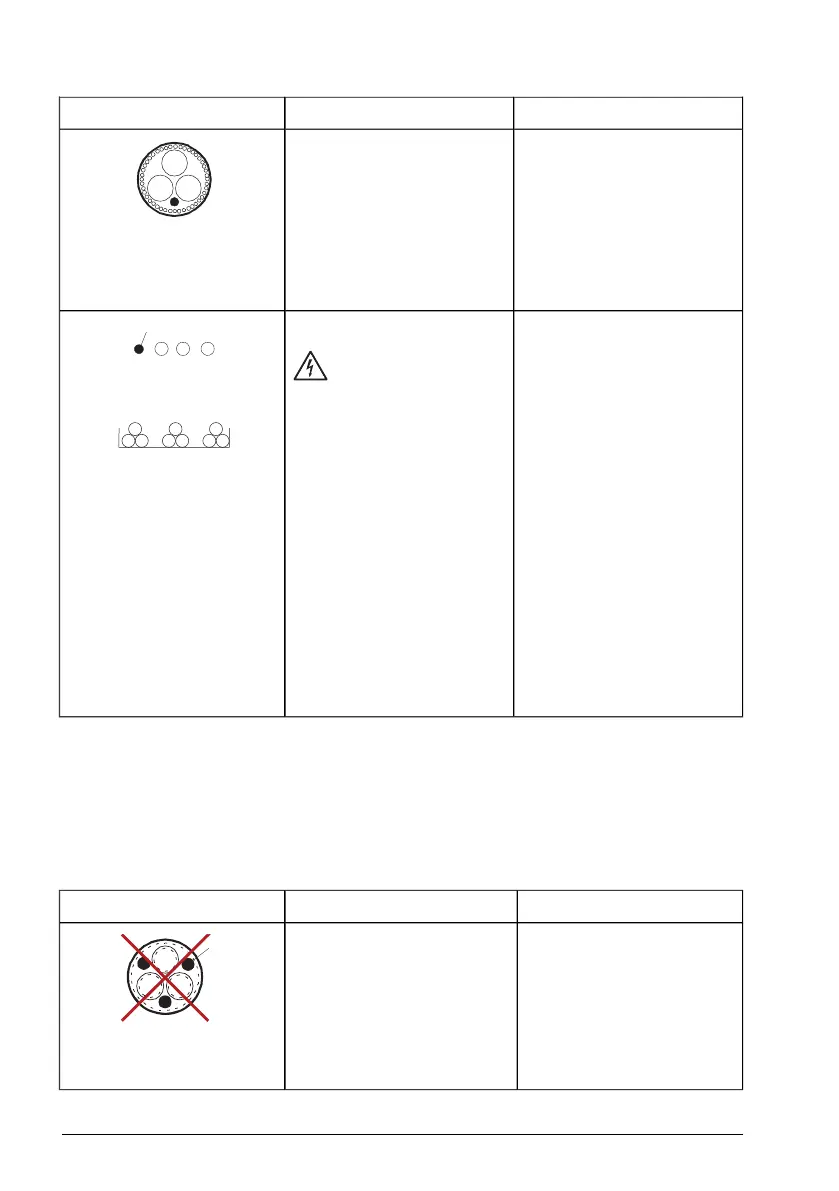Use as motor cablingUse as input power cablingCable type
Yes with motors up to 100 kW
(135 hp). A potential equaliza-
tion between the frames of mo-
tor and driven equipment is re-
quired.
Yes
Shielded (Al/Cu shield or ar-
mor)
1)
four-conductor cable
(three phase conductors and
a PE)
NoYes
WARNING!
If you use unshielded
single-core cables in an
IT network, make sure
that the non-conductive
outer sheath (jacket) of
the cables have good
contact with a properly
grounded conductive sur-
face. For example, install
the cables on a properly
grounded cable tray. Oth-
erwise voltage may be-
come present on the non-
conductive outer sheath
of the cables, and there
is even a risk of an elec-
tric shock.
A single-core cable system:
three phase conductors and
PE conductor on cable tray
Preferable cable arrangement
to avoid voltage or current un-
balance between the phases
1)
Armor may act as an EMC shield, as long as it provides the same performance as a concentric EMC shield
of a shielded cable. To be effective at high frequencies, the shield conductivity must be at least 1/10 of the
phase conductor conductivity. The effectiveness of the shield can be evaluated based on the shield inductance,
which must be low and only slightly dependent on frequency. The requirements are easily met with a copper
or aluminum shield/armor. The cross-section of a steel shield must be ample and the shield helix must have
a low gradient. A galvanized steel shield has a better high-frequency conductivity than a non-galvanized steel
shield.
Not allowed power cable types
Use as motor cablingUse as input power cablingCable type
NoNo
Symmetrical shielded cable
with individual shields for each
phase conductor
54 Guidelines for planning the electrical installation
